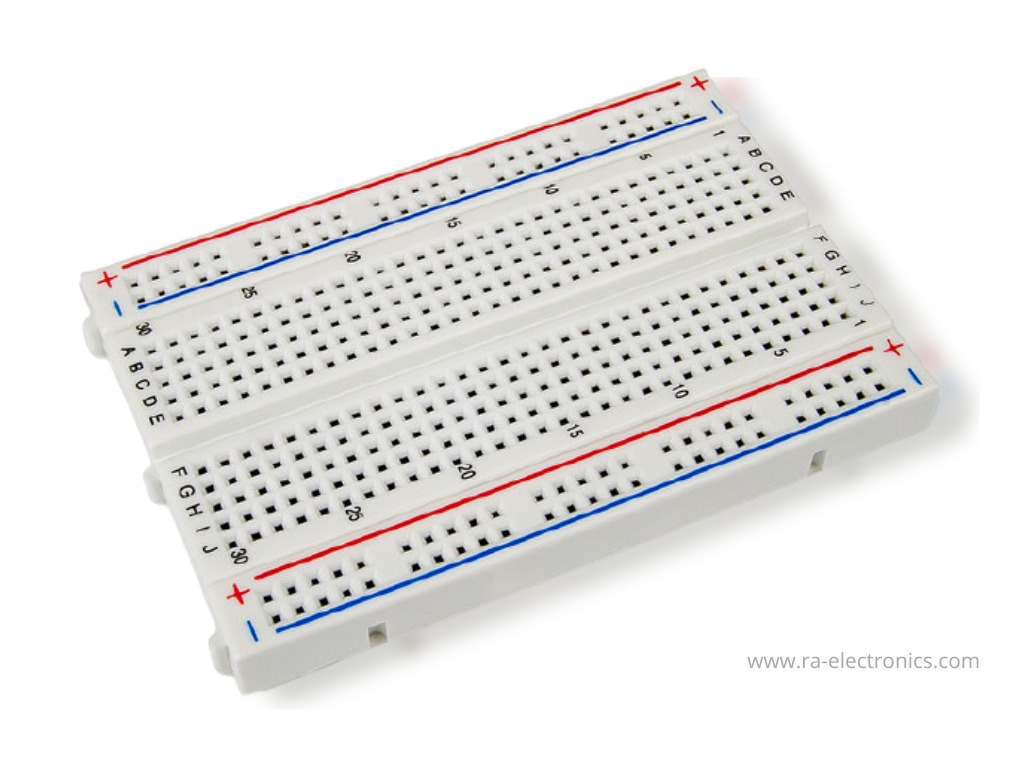Breadboards are an essential tool for anyone entering the exciting world of electronics. Whether you’re a hobbyist, a student, or someone just curious about how circuits work, understanding how to use a breadboard is a crucial first step. In this guide, we’ll walk through the basics, explore common mistakes, delve into simple projects, and discuss the broader applications of breadboarding.
Introduction to Breadboard
Definition and Purpose
A breadboard is a device used for prototyping and experimenting with electronic circuits without the need for soldering. Its primary purpose is to provide a platform for temporary circuit assembly, making it an invaluable tool for beginners.

Importance for Beginners
For those new to electronics, the idea of creating circuits might seem daunting. Breadboards simplify the process, allowing beginners to explore and learn about electronics in a hands-on and risk-free environment.
Components of a Breadboard
Terminal Strips
The breadboard consists of rows of connected terminals, providing a convenient way to connect components. Understanding these terminal strips is fundamental for successful breadboarding.
Bus Strips
In addition to the terminal strips, there are usually bus strips running parallel along the sides of the breadboard. These are used for power distribution, simplifying the wiring process.
Binding Posts
Binding posts allow you to connect external power sources easily. They are essential for more advanced projects that require specific voltage levels.
How to Use a Breadboard
Placing Components
The process of placing components on a breadboard requires attention to detail. Learning the correct way to insert and position components ensures a reliable connection.
Connecting Wires
Wires are used to connect different components on the breadboard. Understanding how to route and secure wires is crucial for creating functional circuits.
Common Mistakes for Beginners
Using Incorrect Terminals
One common mistake beginners make is using the wrong terminals for specific components. This can lead to confusion and malfunctioning circuits.
Overcrowding
Overcrowding the breadboard with too many components can result in crossed wires and unintended connections. Learning to organize components is essential.
Basic Breadboarding Projects
LED Circuit
A simple LED circuit is an excellent beginner project, teaching the basics of connecting a power source, resistor, and LED on a breadboard.
Simple Resistor Network
Creating a resistor network helps beginners understand the principles of resistance and how to combine multiple resistors in a circuit.
Safety Measures
Handling Components
Proper handling of electronic components is crucial for both personal safety and the longevity of the components themselves.
Proper Wiring Techniques
Learning to wire circuits neatly and efficiently not only enhances the aesthetic appeal but also reduces the chances of errors.
Benefits of Breadboarding
Experimentation and Prototyping
Breadboards offer a platform for experimenting with different circuit configurations before committing to a permanent design.
Cost-Effective Learning
Compared to other prototyping methods, breadboarding is cost-effective, making it accessible for beginners and students.
Advanced Breadboarding Techniques
Solderless Prototyping
For more permanent projects, understanding solderless prototyping techniques can take your breadboarding skills to the next level.
Breadboard Power Supply
Learning to integrate a power supply into your breadboard setup adds versatility to your projects.
Troubleshooting Tips
Identifying Faulty Connections
When a circuit doesn’t work as expected, knowing how to identify and fix faulty connections is a valuable skill.
Testing Components
Regularly testing individual components ensures they are functioning correctly before incorporating them into a circuit.
Resources for Further Learning
Online Tutorials
There are numerous online tutorials and guides available for those looking to expand their breadboarding knowledge.
Recommended Books
For a more in-depth understanding, consider exploring books written by experts in the field.
Interview with a Hobbyist: Real-world Application
Personal Experience
Hearing from a fellow hobbyist about their experiences and favorite projects can provide valuable insights and inspiration.
Favorite Projects
Explore some of the favorite breadboarding projects of our interviewed hobbyist for inspiration.
Future Trends in Breadboarding
Technological Advancements
Stay informed about the latest technological advancements in breadboarding for a glimpse into the future of electronics experimentation.
Integration with IoT
The integration of breadboarding with the Internet of Things (IoT) opens up new possibilities for creative projects.
Breadboard vs. PCB
Pros and Cons of Each
Understanding the advantages and disadvantages of using a breadboard versus a printed circuit board (PCB) helps in choosing the right platform for your projects.
Choosing the Right Option
Consider the specific requirements of your project when deciding between a breadboard and a PCB.
Community and Forums
Connecting with Fellow Enthusiasts
Joining online communities and forums allows you to connect with like-minded individuals, share ideas, and seek advice.
Sharing Projects and Ideas
Showcasing your breadboarding projects and exchanging ideas with the community fosters creativity and collaboration.
Conclusion
In conclusion, a breadboard is a gateway to the fascinating world of electronics, offering a practical and hands-on approach to learning. From basic circuits to advanced projects, the possibilities are endless. Embrace the learning process, troubleshoot challenges, and enjoy the journey of creating with electronics.
You may interested in:
How Transistors Work – A basic Explanation
Introduction to MOSFET: Metal Oxide Semi-Conductor Field Effect Transistor
That’s a great point
I was just telling my friend about that.
Wonderful views on that!